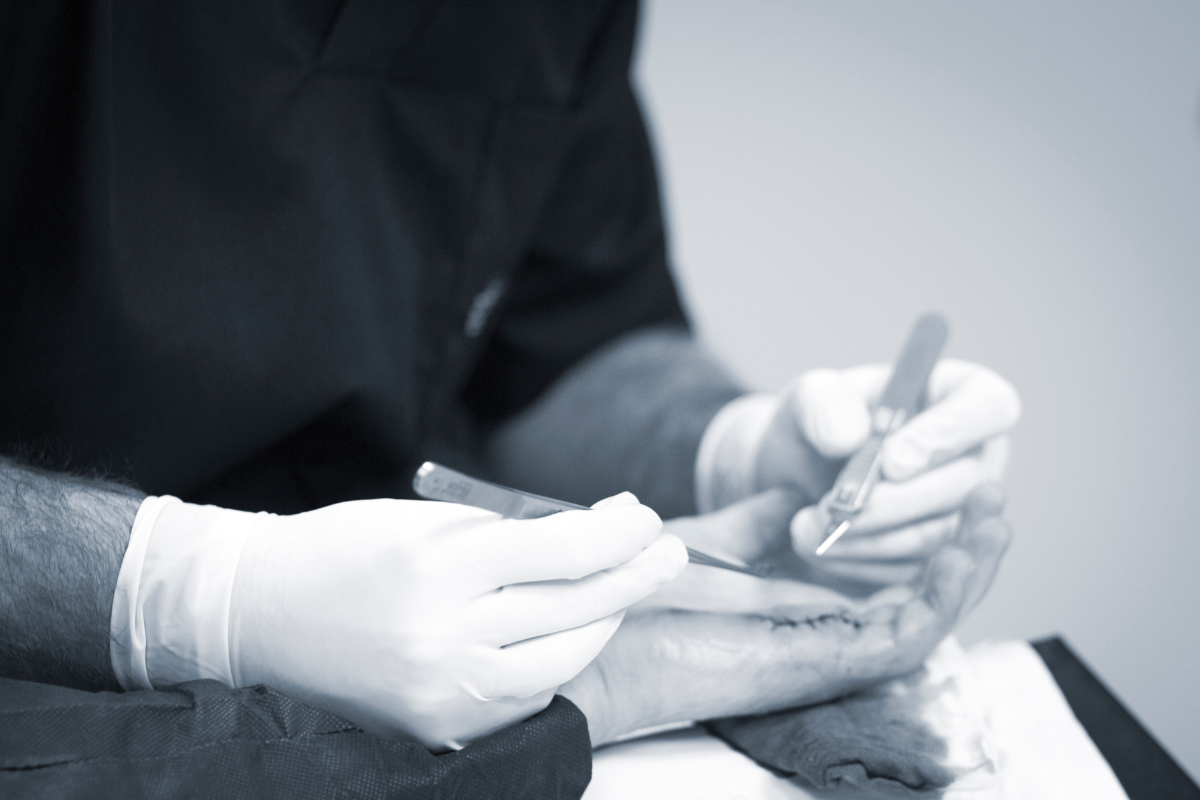What If I Cut My Finger? Restoring Functionality of Flexor Tendon Lacerations

As a board-certified hand surgeon, I have encountered numerous cases of flexor tendon injuries, which can significantly impact a patient’s ability to perform everyday tasks and affect their quality of life. In fact, I own a US Patent on a novel flexor tendon repair mechanism. Flexor tendon lacerations, though often invisible to the naked eye, can result in debilitating functional deficits if not promptly and appropriately managed. Today, let’s delve into the surgical treatment, management strategies, and therapy options available for patients with flexor tendon injuries.
Understanding Flexor Tendon Injuries:
The flexor tendons of the hand play a crucial role in finger movement, allowing us to grip objects, make intricate movements, and perform tasks with precision. Flexor tendon lacerations occur when these tendons are cut or severed, typically as a result of trauma, such as a deep laceration or a penetrating injury.
Unlike injuries to other structures in the hand, such as bones or nerves, flexor tendon injuries may not always be immediately apparent. Patients may experience symptoms such as difficulty bending the affected finger, inability to make a fist, or a popping sensation when attempting to move the finger. Prompt evaluation and appropriate management are essential to prevent complications and optimize outcomes.
Surgical Treatment:
Surgical intervention is often necessary to repair flexor tendon lacerations and restore functionality to the hand. The surgical technique employed depends on various factors, including the location and severity of the injury, the extent of tendon damage, and the presence of associated injuries.
Primary repair: In cases where the tendon ends can be approximated without undue tension, primary repair may be performed. This involves rejoining the severed ends of the tendon using sutures to restore continuity and function.
Tendon grafting: In more complex cases where the tendon ends cannot be directly repaired, tendon grafting may be necessary. This involves using a piece of tendon from another part of the body, such as the forearm or foot, to bridge the gap and restore tendon function.
Tendon transfer: In some cases, particularly when multiple tendons are injured or when the injury involves the distal portion of the tendon, tendon transfer may be considered. This involves transferring a healthy tendon from another part of the hand or arm to replace the damaged tendon and restore function.
Management and Therapy:
Following surgical repair of a flexor tendon laceration, rehabilitation plays a crucial role in optimizing outcomes and restoring functionality to the hand. Hand therapy, under the guidance of a certified hand therapist, is an integral component of postoperative care and typically involves the following:
- Immobilization: After surgery, the hand may be placed in a splint or protective brace to immobilize the repaired tendon and allow for healing. The duration of immobilization varies depending on the extent of the injury and the surgical technique employed.
- Passive range of motion exercises: Once the initial healing period has passed, gentle passive range of motion exercises may be initiated to gradually mobilize the repaired tendon and prevent adhesions from forming.
- Active range of motion exercises: As healing progresses, patients will gradually transition to active range of motion exercises, which involve actively moving the fingers and hand to improve flexibility and strength.
- Strengthening exercises: Strengthening exercises are incorporated into the rehabilitation program to improve the strength and function of the repaired tendon and surrounding muscles.
- Functional activities: As the hand continues to heal, patients will work on performing functional activities that mimic their daily tasks, such as gripping objects, typing, and writing.
The goal of hand therapy is to maximize the functional outcome and restore the patient’s ability to perform activities of daily living independently and pain-free. Therapy sessions are tailored to the individual needs and goals of each patient and may continue for several weeks to months, depending on the extent of the injury and the patient’s progress.
In conclusion, flexor tendon lacerations are complex injuries that require prompt evaluation and appropriate management to achieve optimal outcomes. Surgical repair, followed by comprehensive rehabilitation under the guidance of a certified hand therapist, is essential for restoring functionality to the hand and maximizing the patient’s quality of life. As a board-certified hand surgeon, I am committed to providing compassionate care and personalized treatment plans to help patients recover from flexor tendon injuries and regain function in their hands.
Follow me on Instagram or head to my website for more information on how we can work together.
Details
PHONE:
EMAIL:
VIEW HOURS
©2023 DR. SAM FULLER, MD │BRAND & WEB DESIGNED BY SMITH & CRAWFORD COMPANY
proudly affiliated with south bend orthopaedics
Hours
Surgical Days:
Office Consultation Days:
Monday, Wednesday, Friday Morning
Tuesday - Clinic in Plymouth/Elkhart in morning, Mishawaka in afternoon
Thursday - Clinic hours in South Bend
Friday PM - Clinic hours in South Bend
©2023 DR. SAM FULLER, MD │WEB DESIGNED BY SMITH SOCIAL COMPANY